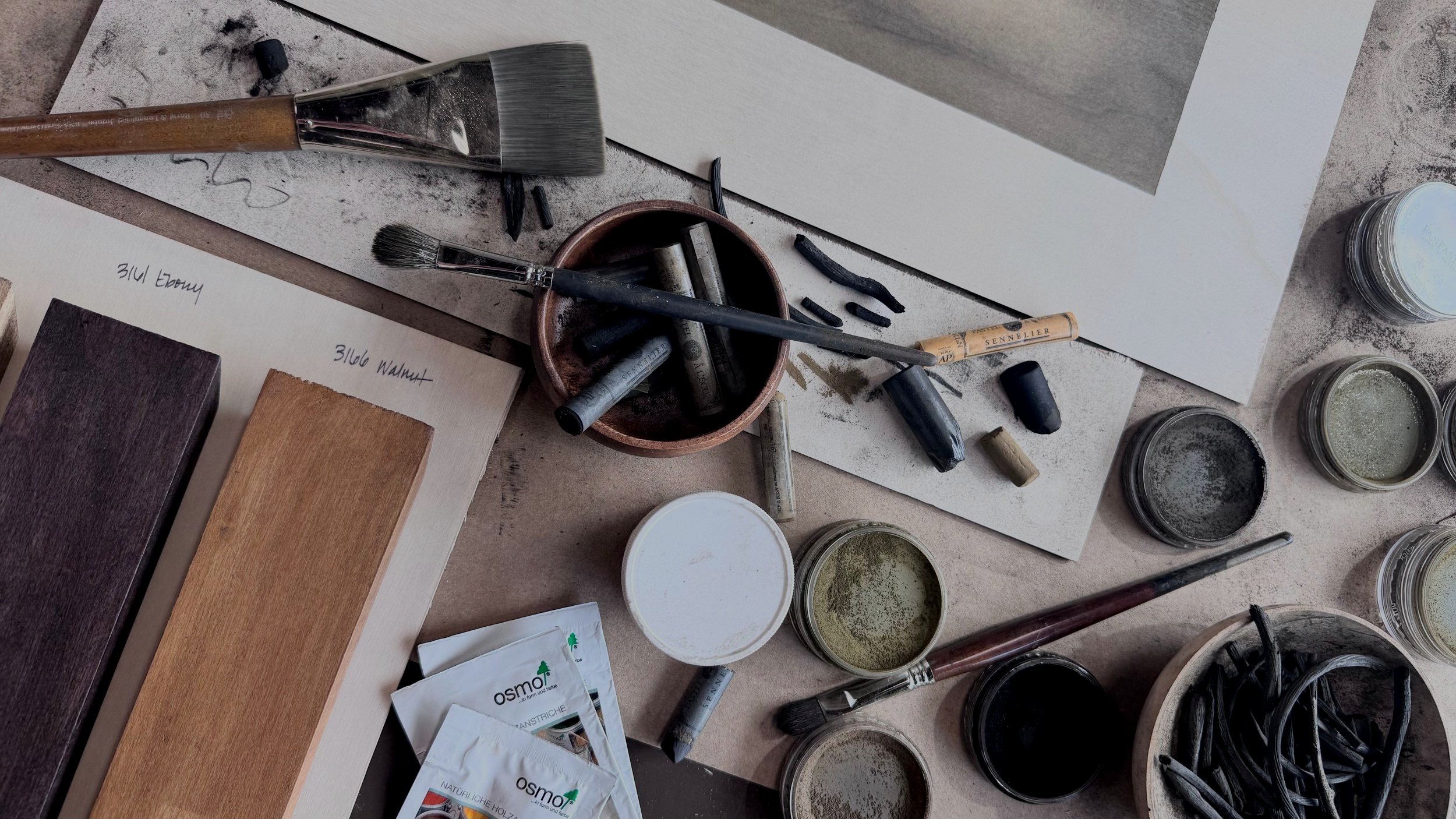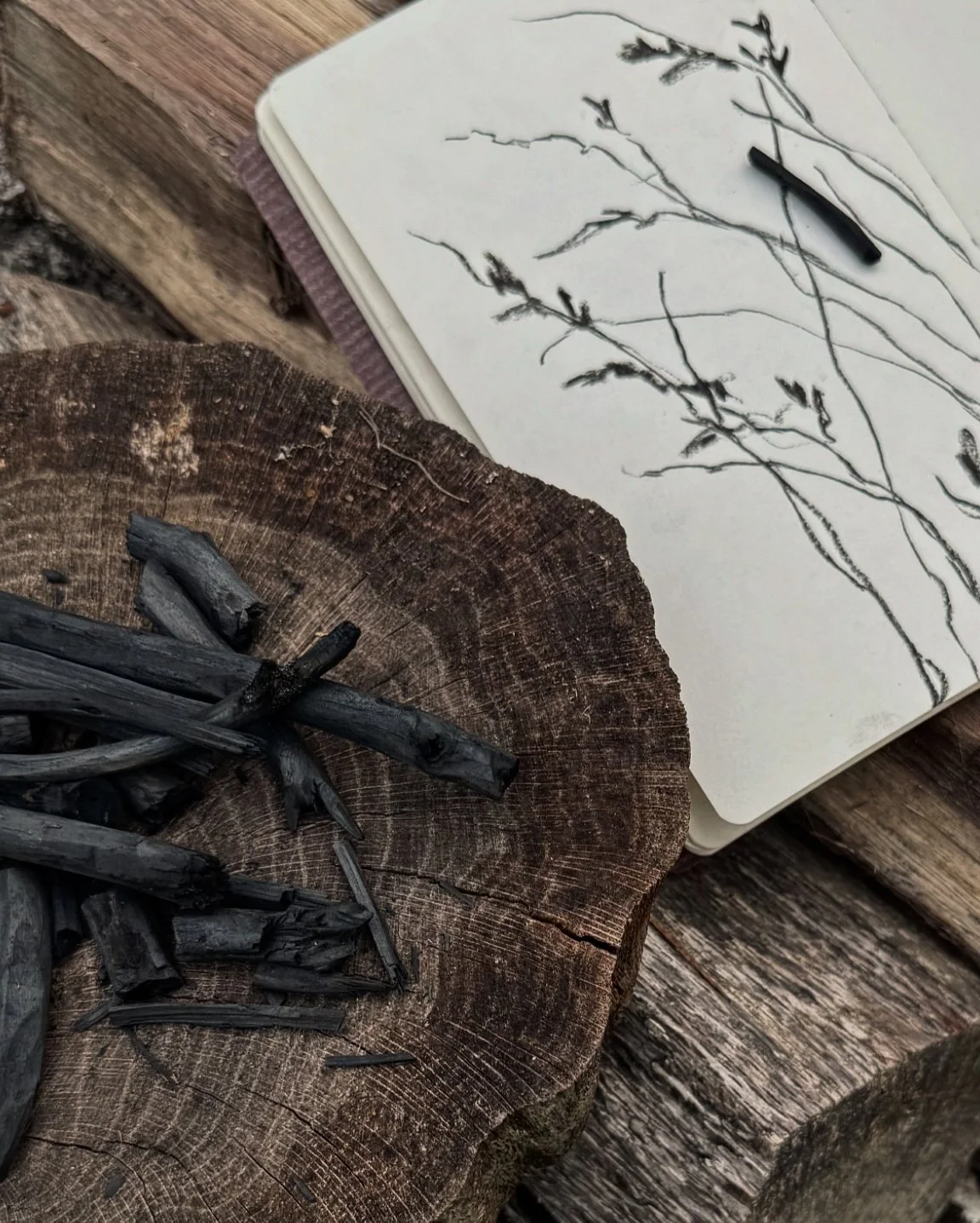
Linsey is passionate about making art that is as healthy for the home and the planet as possible through careful research and experimentation
Mindful Materials
Charcoal
Dating back 40,000+ years, drawing charcoal is one of the oldest and cleanest art mediums. Made from burnt wood and crushed rock pigments, charcoal contains no harsh chemicals or heavy metals. When purchasing drawing charcoal, Linsey tries to source it from brands like Faber-Castell who use FSC-certified materials.
Linsey makes most of her vine charcoal, repurposing pruned branches and fallen limbs from her yard. Like the medium used in Paleolithic times, she creates a fresh batch over a campfire before beginning each new art collection. Watch her process.
Compressed charcoal uses natural gums and waxes to bind the burnt wood particles into a more structured chalk form.
Soft Pastels
Linsey uses a mix of stick and powdered pastels in combination with charcoal. While generally considered non-toxic and eco-friendly, Linsey limits her supply to products that have the Art & Creative Materials Institute Approved seal.
She prefers brands like Rembrant and Sennelier who steer away from using heavy metals like cadmium and cobalt in their pigments. GOLDEN’s PanPastels that Linsey loves to use are made using a unique manufacturing process that requires natural binders and fillers. As a bonus, the plastic dishes are perfect for storing ground homemade charcoal and the ends of pastels sticks that are too small to use but can be crushed into a powder.
Linsey is currently exploring ways to efficiently make her own compressed charcoal and soft pastels with natural pigments and binders.
Wood Panels
Linsey’s current substrate of choice is unfinished wood, typically birch or poplar, treating the grain pattern and texture as its own medium and an influential part of each artwork.
In search of the most sustainable option, most of the panels she uses are crafted with health and sustainability in mind. Ampersand sources FSC-certified materials for their cradled panels and avoids using formaldehyde or other VOCs.
For custom panels, and framing, Linsey makes every effort to source local and nearby suppliers who avoid harsh adhesives and chemical processes.
Artwork Finishes
To secure the medium in place, Linsey applies several thin layers of spray fixative to each finished piece.
SpectraFix Degas Fixative is made with casein, water and alcohol and is based on an antique recipe used by the French Impressionist painter himself! It’s free from odors and safe for indoor and outdoor applications, is 100% archival, and comes in recyclable packaging.
For cradled pieces that aren’t protected by glass, Linsey seals the artwork with a non-yellowing archival cold wax. Gamblin’s Cold Wax Medium is primarily made from natural beeswax and Gamsol, a low-toxicity solvent, and the brand priorities environmentally conscious practices.
Frame Finishes
Linsey handcrafts the frames for her cradled wood panel works, sourcing native species (locally milled when possible) such as poplar, oak, and maple.
In an effort to move away from high-toxicity products like polyurethane, Linsey has recently made the switch to Osmo USA for finishing her frames. These oils and waxes are based on rapidly renewable, natural vegetable oils that maintain the elasticity and health of the wood.
Reproductions
COMING SOON
Linsey will soon begin offering archival prints exclusively on bamboo paper from a local fine art printer.
A more regenerative source compared to cotton, bamboo is acid- and lignin-free and meets the most precise requirements in terms of longevity. The unique combination of the natural fibers, warm white tone, and soft surface texture make for a sensual and high-quality print.
Sourcing Asheville Fine Art Printing reduces transportation and packaging needs while supporting Linsey’s local creative community and economy.





